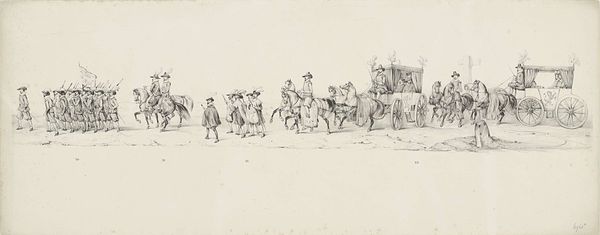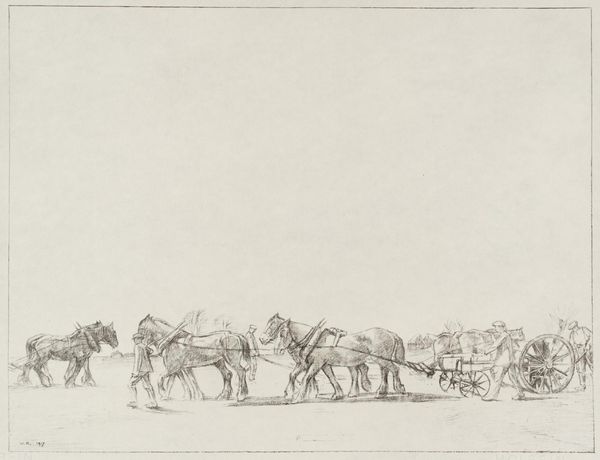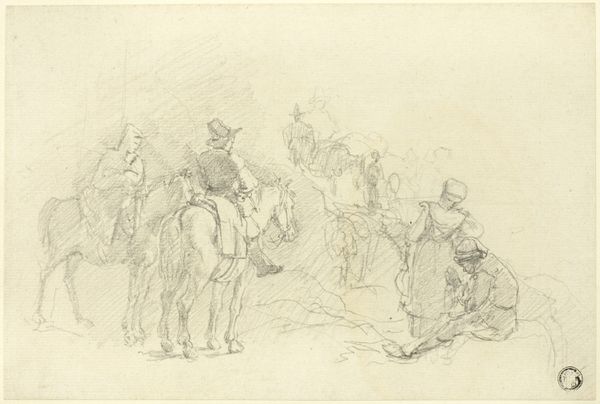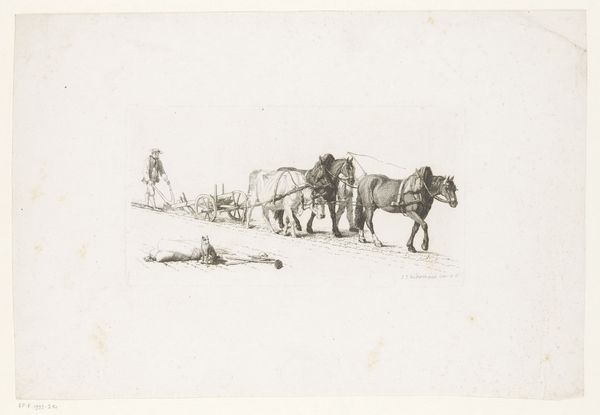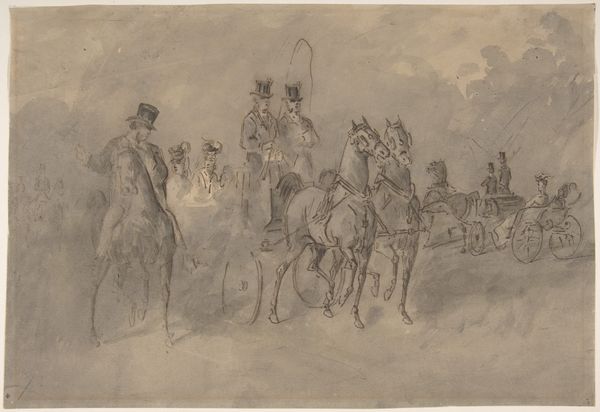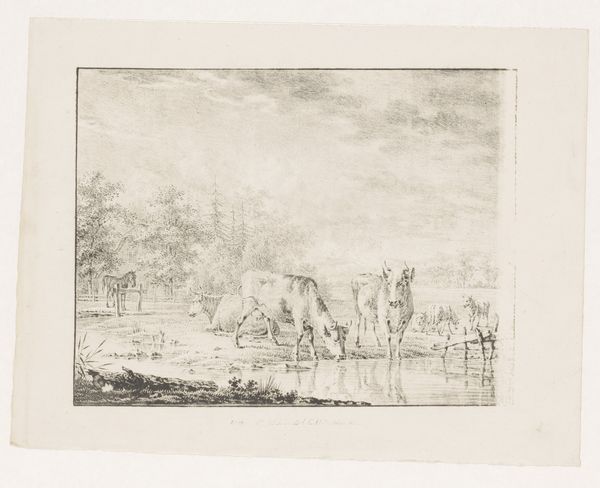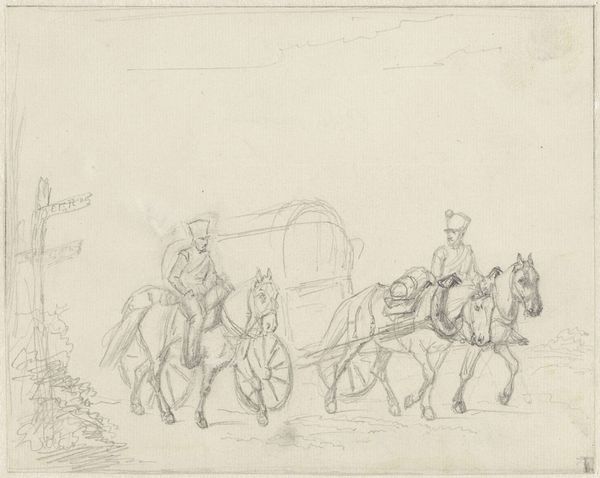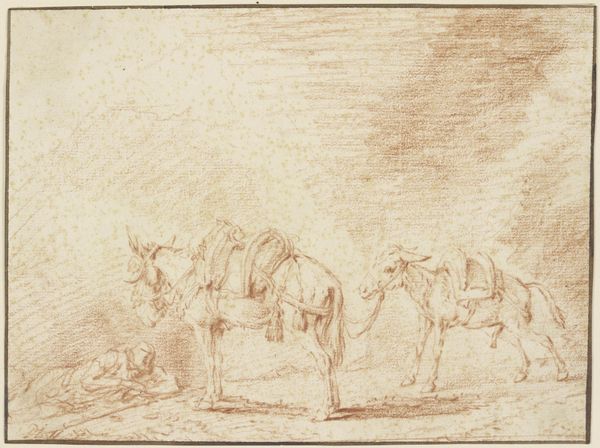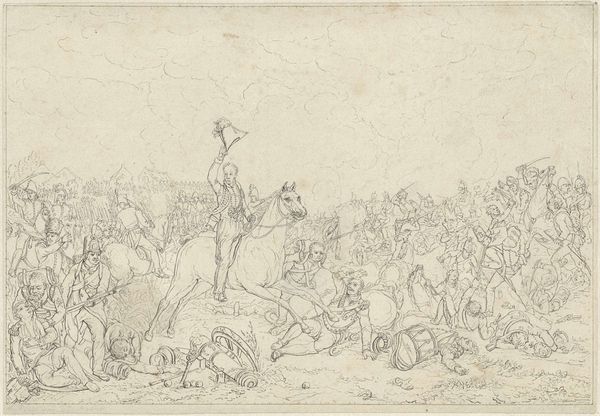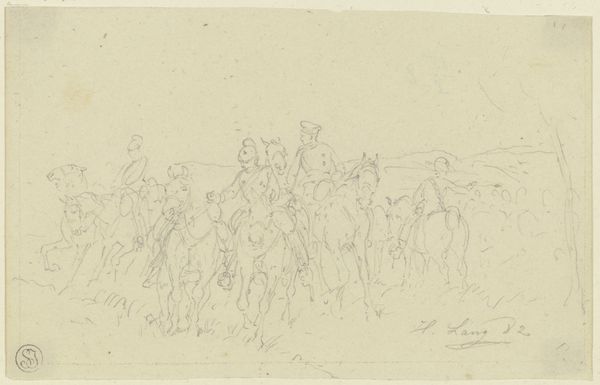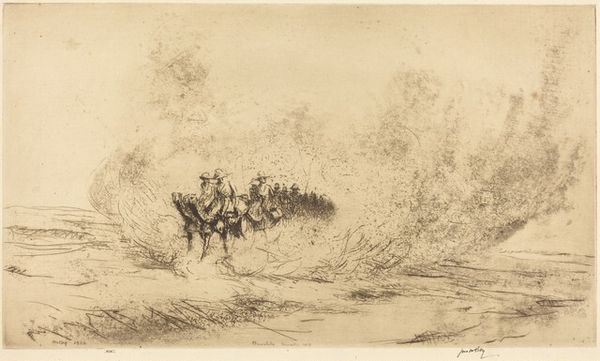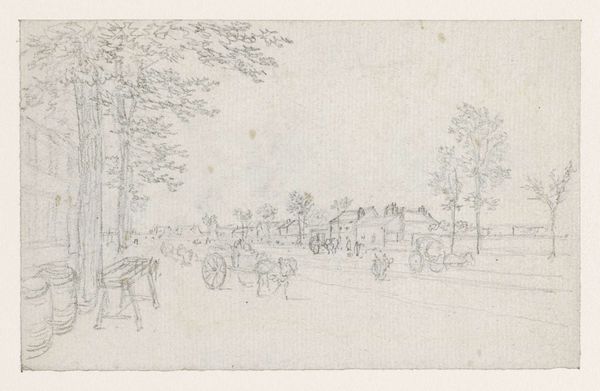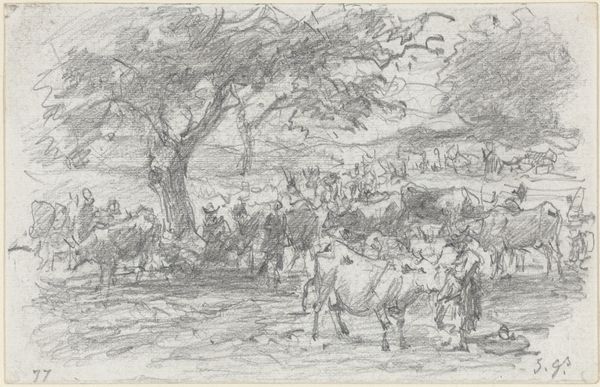
drawing, graphite
#
drawing
#
impressionism
#
landscape
#
graphite
#
genre-painting
Copyright: Rijks Museum: Open Domain
Curator: Looking at this graphite drawing, "Group of Riders on a Path" by Anton Mauve, dating from 1848 to 1888 and held here at the Rijksmuseum, I am immediately struck by the economy of line. It captures such movement with so little apparent effort. What's your impression? Editor: Bleak. Very bleak and... unfinished. It's a washed-out world with figures, possibly a military or a labor convoy? Whatever function this portrays, it offers little comfort. The path looks rough, and the sketchy background trees evoke winter. Curator: Indeed. I think that very impression is precisely what makes it successful formally. Observe how Mauve uses the faintest of graphite strokes to define the landscape, setting a stage of sparse beauty. Editor: True. Yet, landscape art in the 19th century was very much about constructing a vision of national identity. What does this contribute to such national self-fashioning, if anything? Is it romanticizing rural hardship, or documenting military power? Curator: Perhaps neither. Notice that he does not give us details of their faces or uniforms. The repeated horizontal lines lend a sense of rhythm to the work. Mauve’s concern seems to be less narrative and more a study of form and movement within a landscape. The lack of individual details contributes to the harmony of the overall composition. Editor: The muted palette of graphite is interesting, because color in the era could connote political allegory and status—the absence almost feels intentional, yet given it's only a graphite work, maybe I read too much. There’s a palpable tension. The rhythmic progression of the riders, however faint, suggests something larger. Consider the impact this scene would have on the local viewers versus others? Curator: That's interesting. This period saw the rise of modern industrial society but remained deeply aware of a rural, pre-industrial past. Looking at "Groep ruiters op een pad," perhaps its incompleteness—or rather, the *suggestion* of completeness—reflects that transitional phase. Editor: Indeed, a compelling case for an aesthetic liminality mirroring social upheaval. It provokes so much, even within what appears unfinished, a real testament to art's ability to generate ideas.
Comments
No comments
Be the first to comment and join the conversation on the ultimate creative platform.
